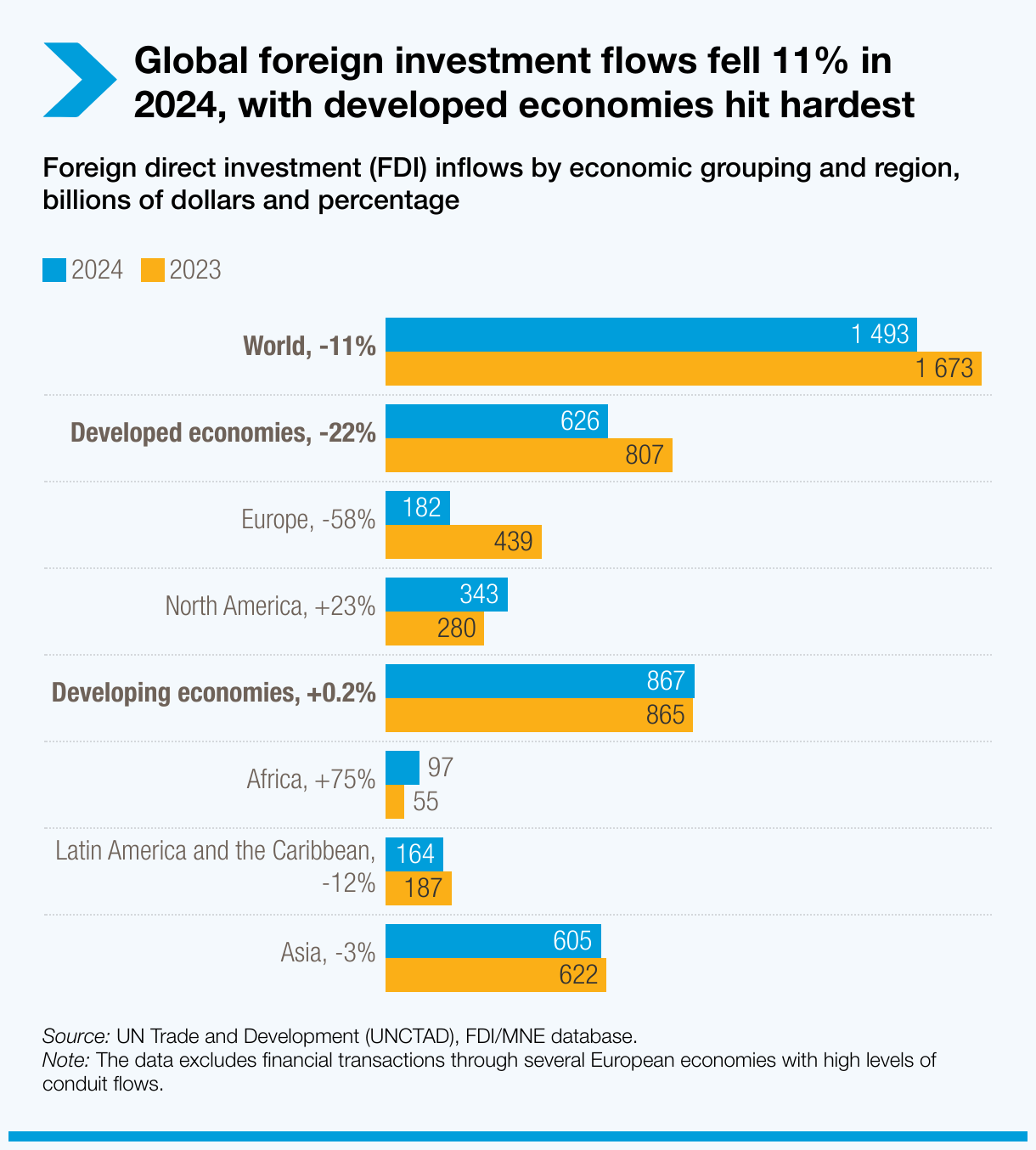A new report by the United Nations Conference on Trade and Development (UNCTAD) highlights significant changes in India’s foreign investment landscape. The World Investment Report 2025 shows that while India still attracts foreign direct investment (FDI), its contribution to capital formation is declining, with domestic sources increasingly driving economic growth.
Key highlights of the report:
FDI’s Shrinking Share in Capital Formation: In 2024, FDI inflows accounted for just 2.3% of India’s gross capital formation—this marks a significant drop from 8.8% in 2020.
· This means that India is now relying more on domestic sources and other financial mechanisms to fund its investments and economic growth.
· The total stock of foreign investment in India, which includes cumulative investments over the years, stood at 14% of GDP in 2024, down from 17.9% in 2020.
Actual Inflows and Sectoral Shifts: India attracted $27.6 billion in FDI inflows in 2024. This was a decline of 1.8% from the previous year and less than half of the FDI India received in 2020. Despite this fall, the report highlights that India saw strong growth in specific sectors—particularly manufacturing.
· According to UNCTAD, India and the United States saw record growth in manufacturing-related investments. In India, the growth was driven by large projects in the semiconductor and basic metals sectors.
India’s Position in South Asia and Asia: India remains the largest recipient of FDI in South Asia, attracting nearly 80% of the total inflows to the region in 2024.
· On the capital expenditure front as well, India performed strongly. Projected capital expenditures rose by more than 25% to reach $110 billion in 2024.
· This amount makes up nearly one-third of the total capital expenditure in Asia, highlighting India’s growing importance as an investment destination.
Cross-Border Mergers and Acquisitions (M&A): The report also notes a decline in cross-border M&A activity across developing Asia, including India.
· China was the biggest contributor to this decline, with deal values falling by 49% in 2024. India and the UAE also contributed to the fall, largely due to asset divestments by foreign investors.
· For instance, Walt Disney’s partial exit from India. The company merged its subsidiary, Star India, with Viacom18 Media in a $3 billion deal that created a joint venture majority-owned by Indian firms.
· Additionally, several foreign-owned pharmaceutical assets in India were sold to local companies, further reducing foreign presence in key sectors.
Conclusion:







